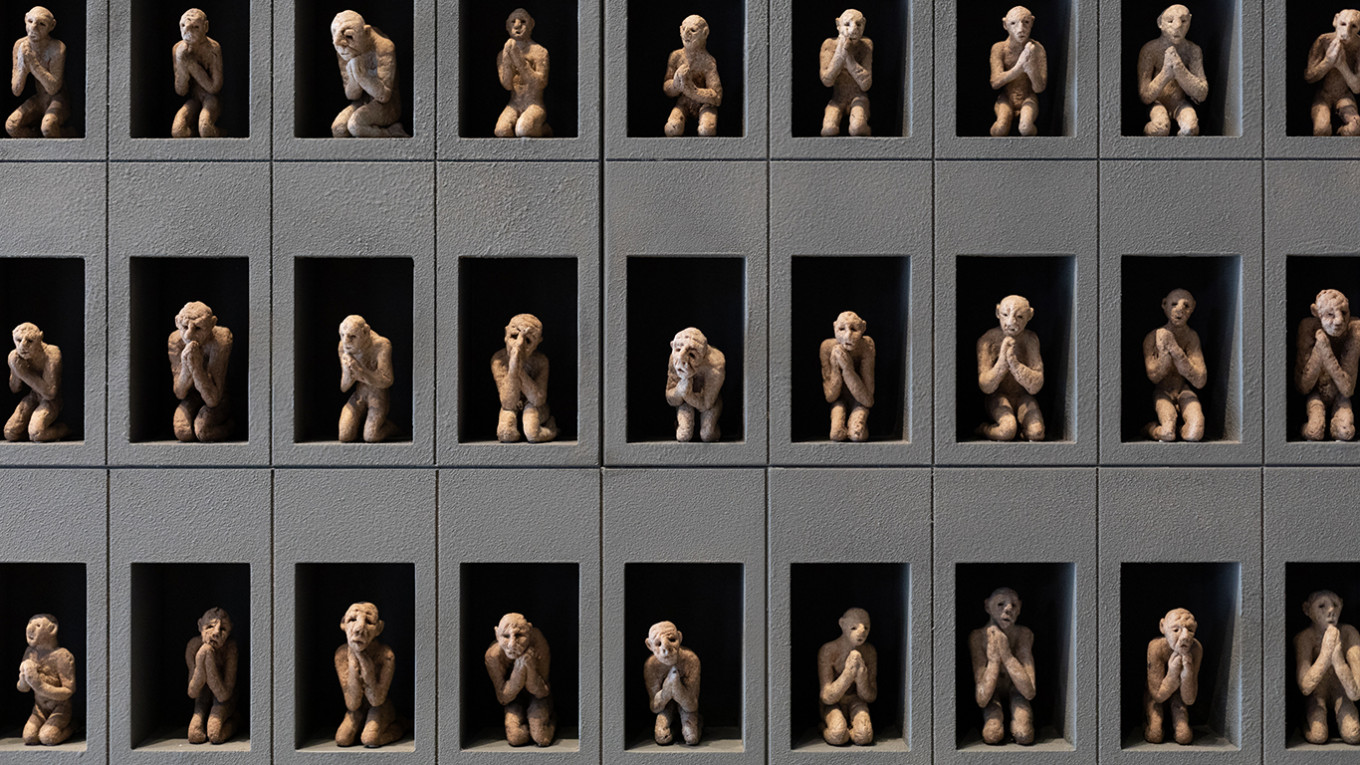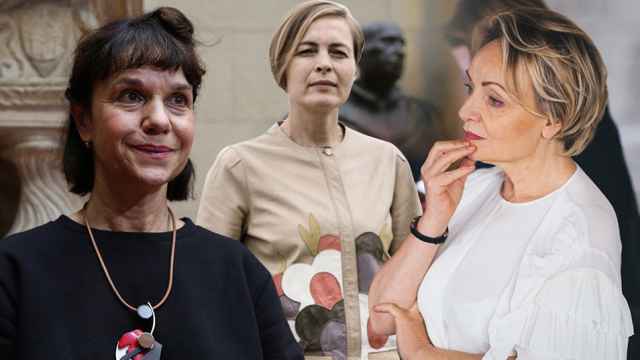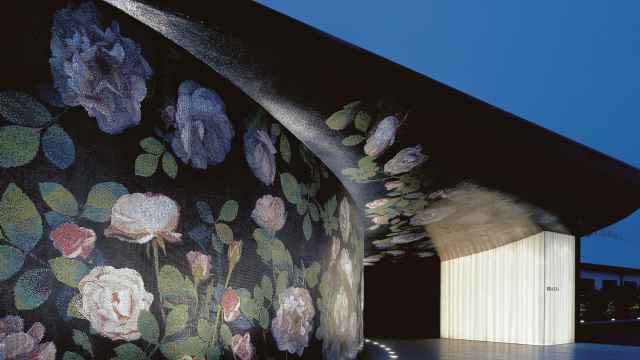The Second Triennial of Contemporary Russian Art at the Garage Museum of Contemporary Art that opened this month is a very unusual exhibition. Called “A Beautiful Night For All the People,” the show consists of works chosen not by curators — professional art experts — but by the participants in the last Triennial.
To participate, the artists had to agree to make clear the relationship between the recommender and the recommended artist (for example, a teacher recommending his or her student), and the recommender had to agree to do something for the recommended work (for example, write the annotation). In addition to art works, recommenders chose research projects, science labs, educational organizations, and charities.
By handing over the choice to artists, Garage is highlighting both the diversity of art and artists and the close personal contacts among artists working in Russia today.
It was a bold choice. In his presentation of the exhibition to journalists, curator Valentin Dyakonov said that the recommenders who chose artists for the exhibition were “total delinquents who recommended artists that the system would overlook.”
“The whole show is totally disconnected,” he said, and continued, “and that is its most important characteristic.” The show is filled with works done by artists who, for the most part, he said, “were not ruined by art school.”
There is a lot to see. Works by more than 70 artists are on display, most works created especially for the exhibition.
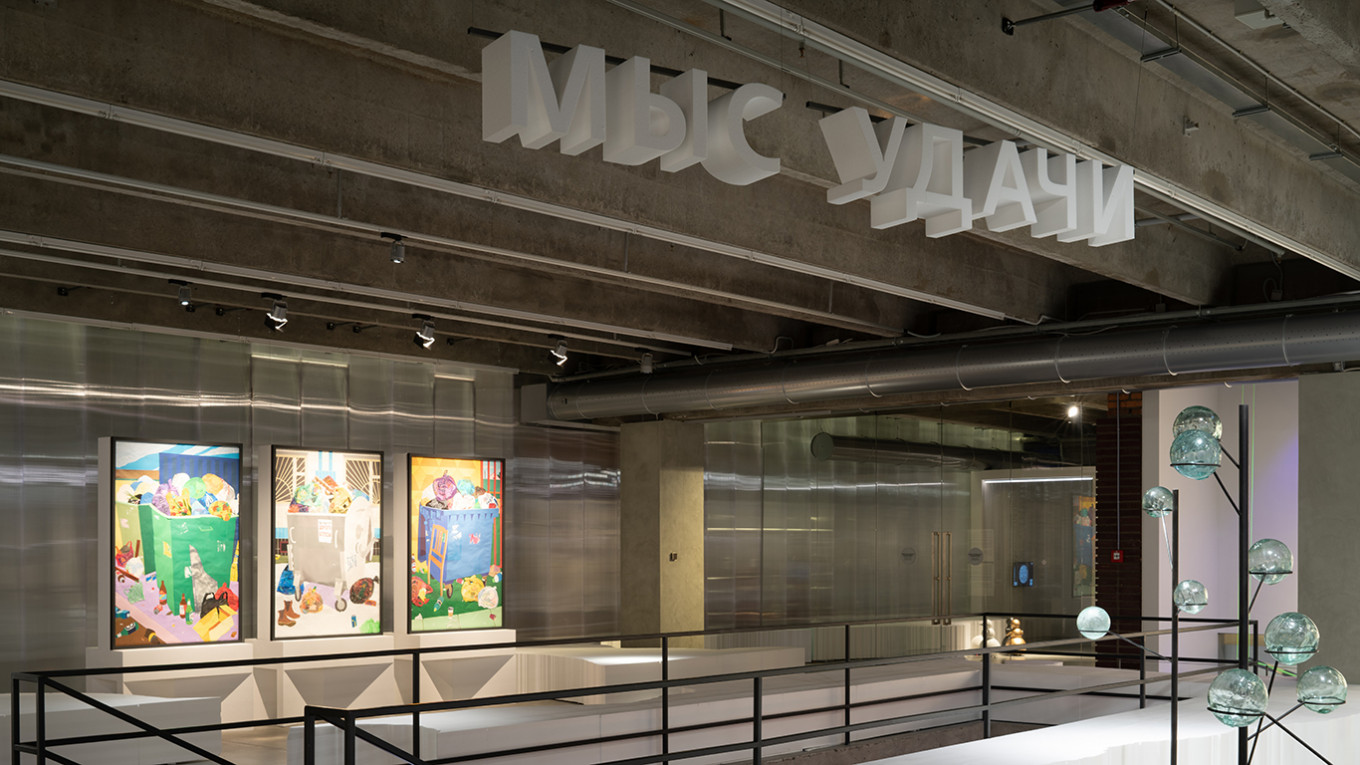
The works are grouped in enclaves on a whimsical geographical map of artist-recommenders and their recommended artists. There is the Archipelago of Sponsors, the Valley of Friends, the Reservation of Love, the Spit of Native Sons and Daughters, the Comrades Territory, the Cape of Good Fortune, the Cape of Connoisseurs, the Island of Competitors, the Peninsula of Mentors and Plateau of Ancestors. While the exhibition is for the most part not overtly political, there are interesting historical subtexts and references to Russia’s colonial past.
The first thing you notice on the second floor is a gigantic installation of glass globes that look like lanterns. But they are actually fishermen’s floats used on nets in the Moonsund Archipelago in Estonia, which includes the islands of Saaremaa, Hiiumaa, and the smallest island of Muhu.
In the Soviet period the archipelago was a closed border zone that could only be visited with a special pass, but local residents would pretend to go fishing there and then escape to Sweden. The Soviet border guards knew this very well, so they restricted fishing to small boats. Some of them were captured while trying to reach the border.
The artist Alexander Morozov conceived the installation of glass floats as a memorial to those who were unable to escape to Sweden. But the political aspect is understated. The floats are from the hamlet of Nommkula on Muhu, where once fishermen caught the largest fish ever registered in Estonia. Morozov won a lottery organized by the recommender, who wished to have the greatest range of possible participants. The floats are one of the high points of the show — magnificent for just being beautiful.
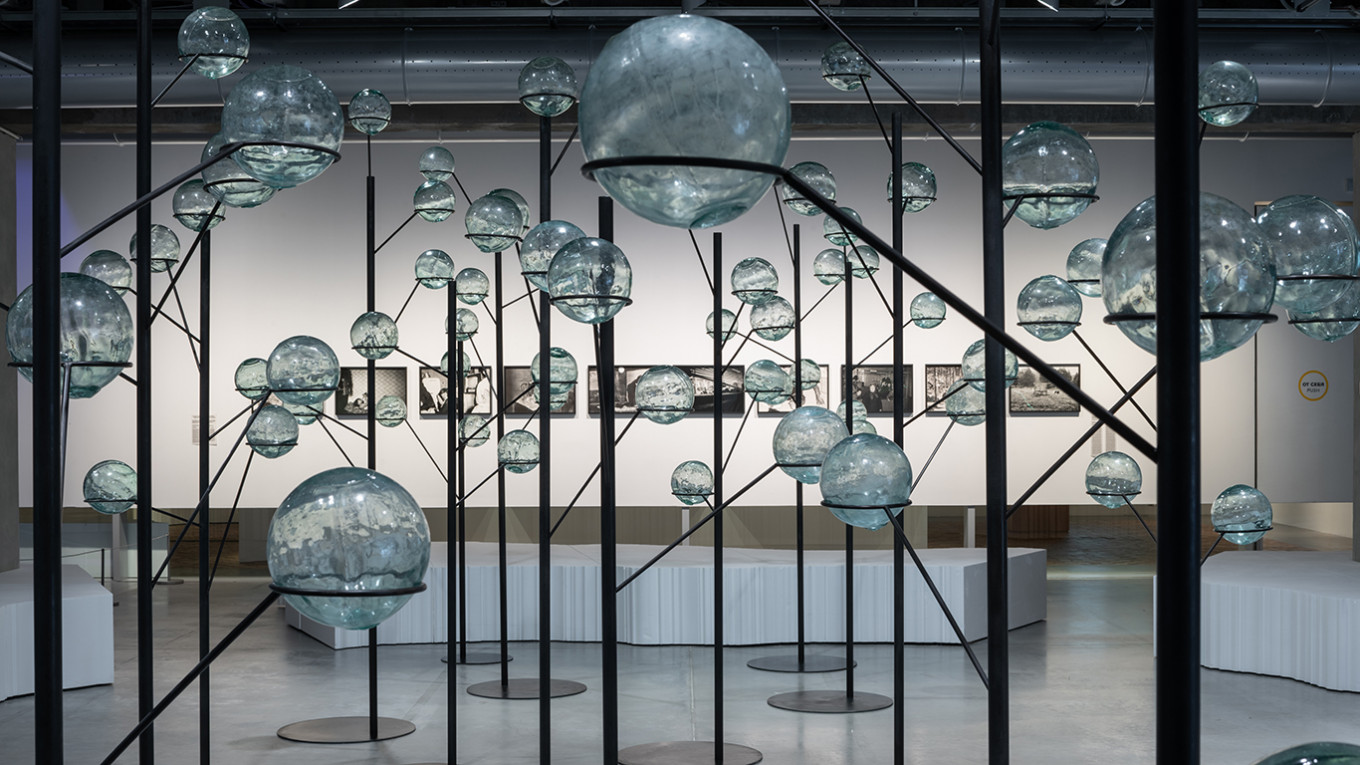
Another delight on the second floor is the PAZ bus without tires. The exhibit is a reference to an old joke that the tires were constantly stolen by young people to be made into condoms. Now the bus that did the run from Severnaya Gora to the Yuzhny Settlement in Kaliningrad rests, tireless, in Garage, with a black and white television inside.
The show also has some serious paintings, such as a very interesting triptych called “Spring.2020” by Natalia Zurabova. The artist, who lives in Israel, created a beautifully painted work that expresses her response to self-isolation. Her response was sad, but exact — a fine example of contemporary painting.
Lovers of classical painting will like the portrait of Alexei Yermolov by Pyotr Zakharov, done in 1843. In 1819 when the Russian army began its war in the Caucasus, they destroyed the village of Dadi-Yurt and found a Chechen boy lying by his dead mother. Yermolov commanded one of his soldiers, Zakhar, to raise him. The boy, whom they named Pyotr Zakharov, turned out to be a talented artist. “He draws everything he sees,” the bemused General Yermolov wrote. “Perhaps this memorial to Pyotr Zakharov will help us understand how the colonial humiliation continuing to our days was perceived, understood and conceptualized over the course of two centuries,” wrote Aslan Goisum in the annotation to the painting, choosing not to make his relationship to the recommender explicit.
Another interesting work is a set of handkerchiefs with a ball-point pen drawings by Alexander Lavrov, an artist from Nizhny Novgorod who is interested in old objects, their texture and how they move. “Handkerchiefs are quickly disappearing today as fashion accessories,” reads the annotation to the installation, notable for its striking portrait of Valentina Tereshkova, the first woman in space.
And be sure to watch the short film by Kaliningrad director Kirill Glushchenko called “The Lights of Moscow on Moscow Prospekt,” about life fading from the most western region of Russia.
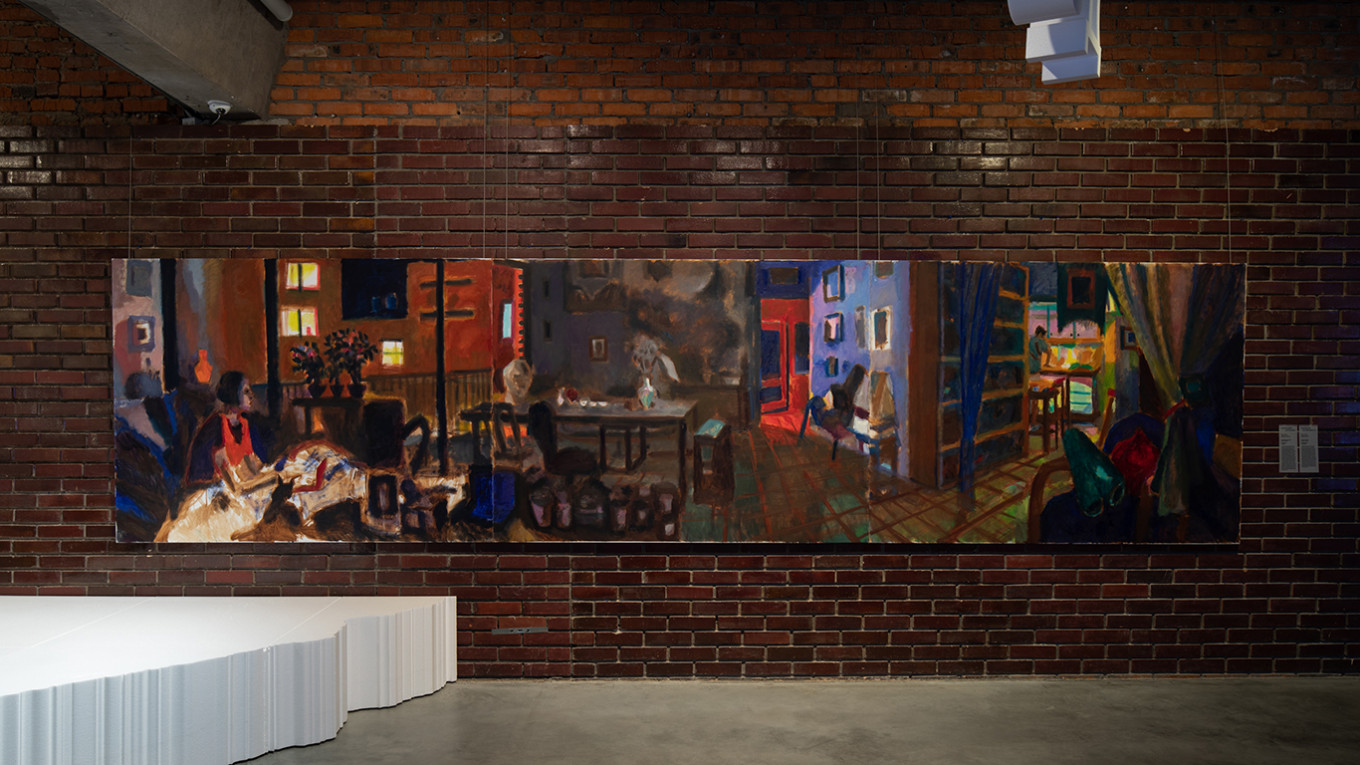
But perhaps the most impressive artwork in the exhibition is the enormous sculptural installation by Andrei Kuzkin, three walls filled with little human figures made of breadcrumbs and white glue, each in their own little niche and each a memorial to a victim of the totalitarian regime. The annotation states that the figures were made with a bit of human blood.
There is much to see and ponder in this wide-ranging, very diverse exhibition. Not all of it with make sense. As Dyakonov noted, the first and second Triennials are unified by the presence of a wrought-iron bathtub. “We still don’t know what it means,” Dyakonov said, “but we’re working on it. Everything is here by chance, including the exhibition itself.”
The show will run until Feb. 14, 2021.
For more information about the show, tickets, and visiting hours, see the Garage site here.
A Message from The Moscow Times:
Dear readers,
We are facing unprecedented challenges. Russia's Prosecutor General's Office has designated The Moscow Times as an "undesirable" organization, criminalizing our work and putting our staff at risk of prosecution. This follows our earlier unjust labeling as a "foreign agent."
These actions are direct attempts to silence independent journalism in Russia. The authorities claim our work "discredits the decisions of the Russian leadership." We see things differently: we strive to provide accurate, unbiased reporting on Russia.
We, the journalists of The Moscow Times, refuse to be silenced. But to continue our work, we need your help.
Your support, no matter how small, makes a world of difference. If you can, please support us monthly starting from just $2. It's quick to set up, and every contribution makes a significant impact.
By supporting The Moscow Times, you're defending open, independent journalism in the face of repression. Thank you for standing with us.
Remind me later.


